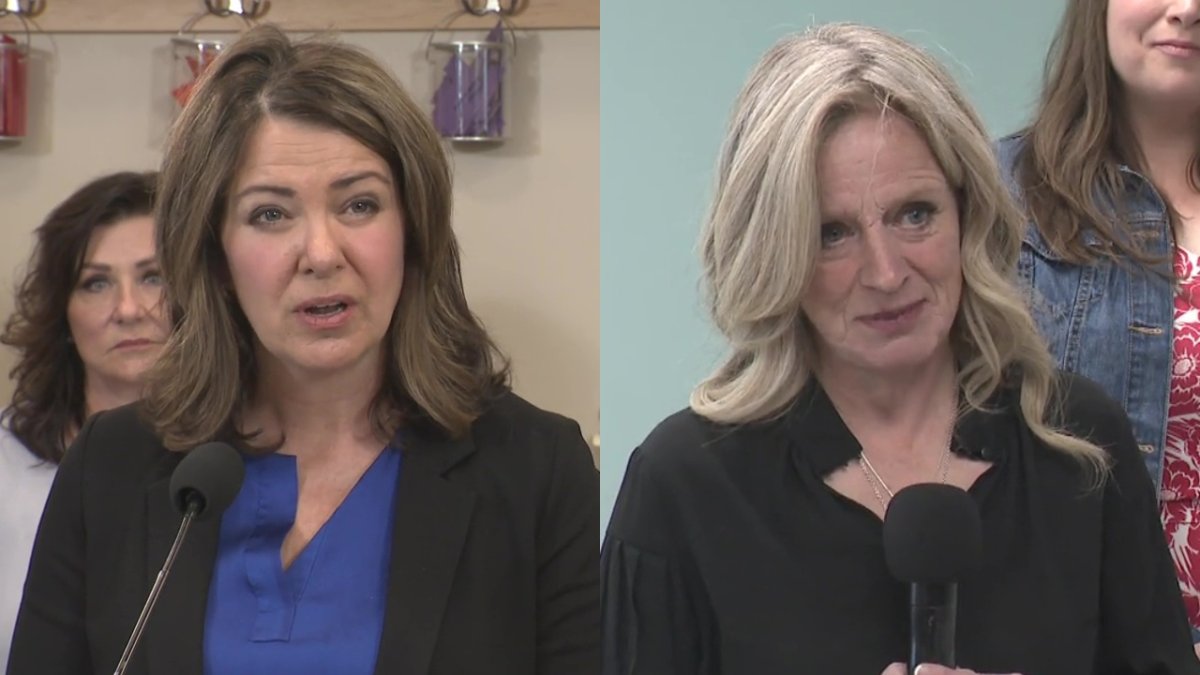The leaders of the Alberta NDP and UCP were in Calgary on Saturday promising to improve health care in the province.

The Alberta NDP announced a health-care plan that will offer better training and career pathways to prospective medical students.
Leader Rachel Notley is also promising signing bonuses of up to $10,000 to attract health professionals to Alberta and create up to 10,000 new post-secondary spaces specific to health care and related fields over the next three years.
“We will invest $375 million over three years to add the spaces, so the folks who want to pursue these careers are not forced to leave Alberta in search of that important health-care education,” Notley said at a news conference in Calgary.
UCP leader Danielle Smith was at a Calgary daycare on Saturday, announcing a plan to invest in women’s and children’s health by expanding newborn screening and increasing funding for obstetrics.
She said the UCP will develop a province-wide midwifery strategy that will include more funding for midwife positions.
“Midwives are critical to Alberta’s health-care system. Not only do they reduce the pressure on obstetrics, emergency, rooms and primary care, but they also help to fill gaps in rural Alberta. Indigenous midwives play a particularly important role as they provide culturally appropriate care in their communities,” Smith said.
Smith also commended the work of health professionals in connection to new Alberta Health Services data that shows EMS response times and capacity have improved through the start of this year.
“I’m very excited to hear the stories about how they’re finding little innovations that allowed us to make some big changes,” Smith said.
There has been a significant decrease in frequency of red alerts this year compared to November of 2022.
“When you look at the fact that we’ve had virtually no code red alerts I think that’s a testament to all of the incredible hard work that our front-line health professionals have done,” Smith said
Red alerts are issued when no ambulances are available to respond to 911 calls in a given area.





Comments